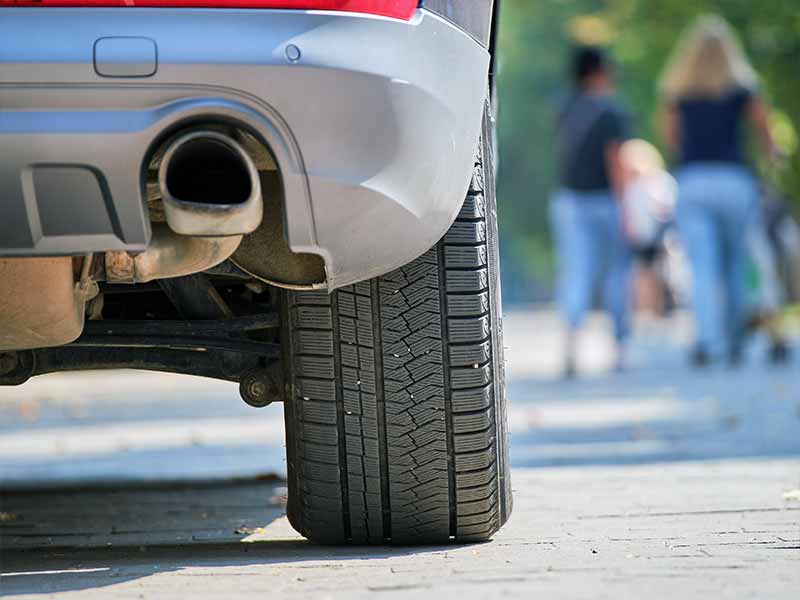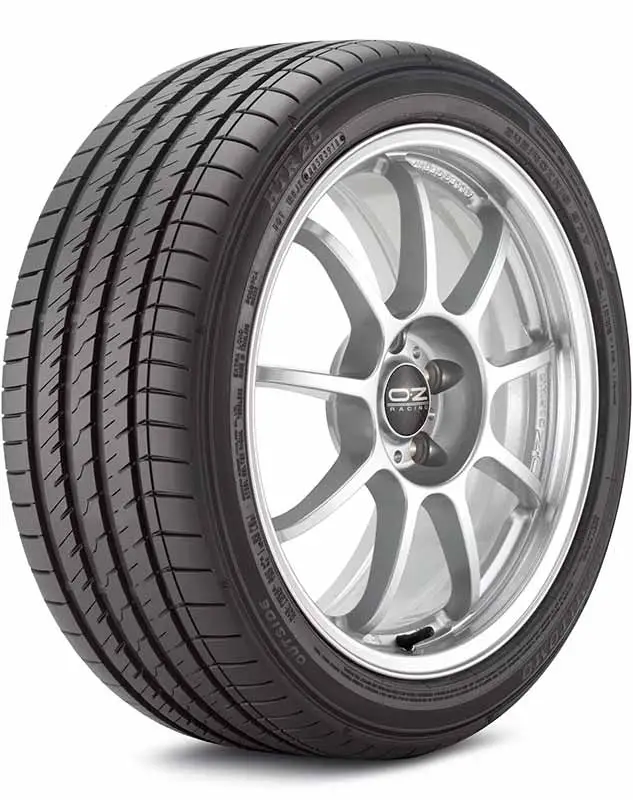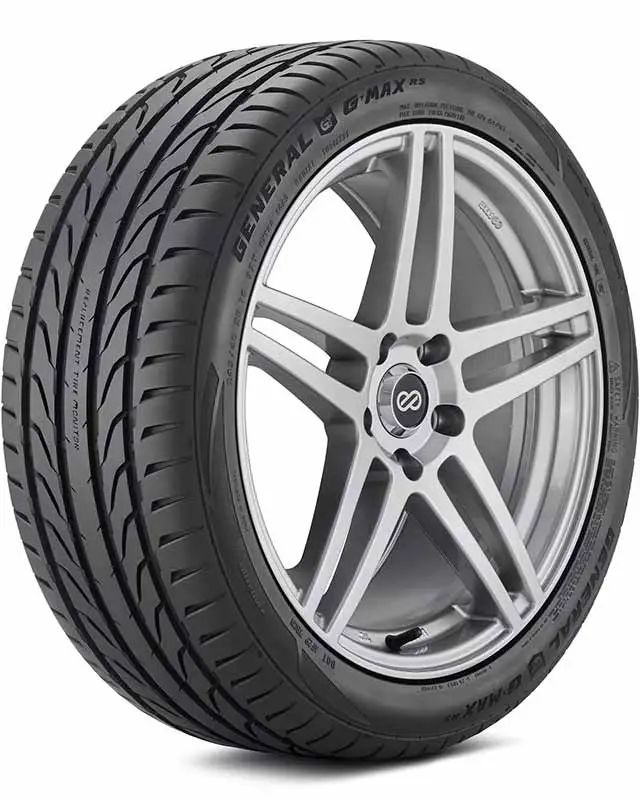How do you know if you need a rear wheel alignment? If you’ve noticed your vehicle pulling to one side, your tires wearing unevenly, or your steering wheel not being centered, these can be signs that your wheels are out of alignment.
However, these symptoms can also be caused by other issues, such as worn suspension components or a damaged tire.
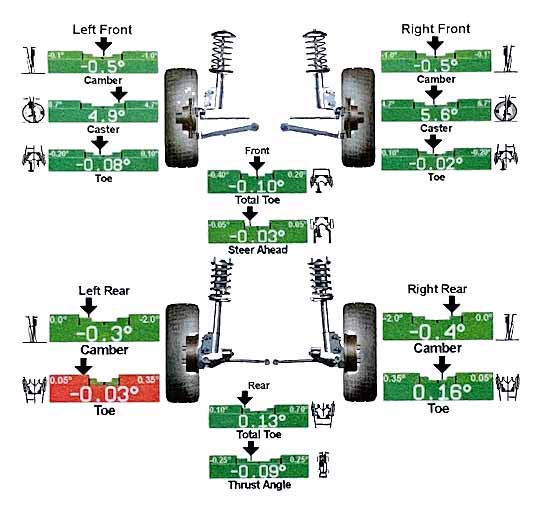
Rear Wheel Alignment Symptoms
Many of the symptoms associated with bad alignment on the front wheels are the same with the rear. Most modern cars and trucks have an Independent Rear Suspension (IRS), which is a simplified version of the suspension geometry on the front end of your vehicle.
- Premature Or Uneven Tire Wear
- Chassis Vibration
- Off Center Steering Wheel While Driving Straight
- Rear End Noise Or Squealing Tires
Some will have a solid rear axle that isn’t adjustable. If your solid rear axle suspension is out of alignment, it will be due to worn or damaged suspension parts or accident damage.
In this article, I’ll walk you through some common signs that indicate your vehicle may need a rear wheel alignment and explain why it’s important to address alignment issues sooner rather than later.
Let’s take a closer look.
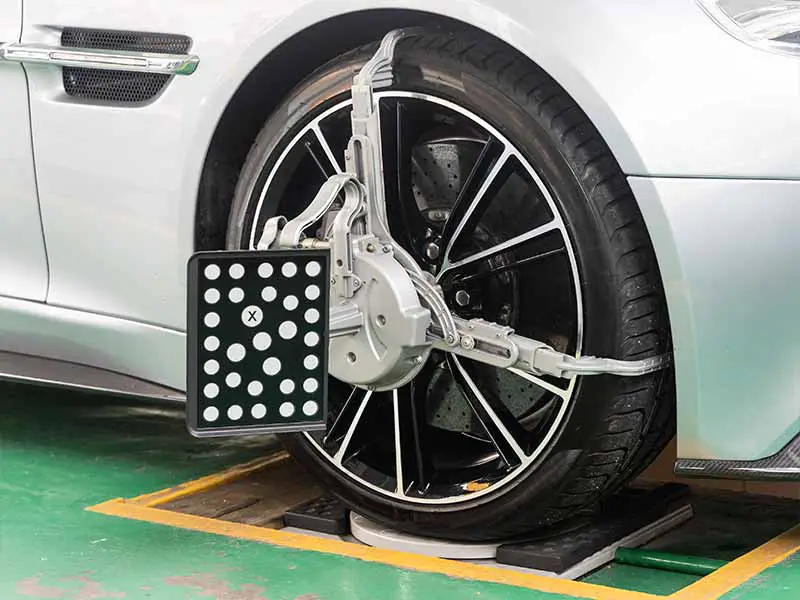
Rear Wheel Alignment Problems
When it comes to rear wheel alignment, there are a few issues you should keep an eye out for:
Premature Or Uneven Tire Wear
One of the most common symptoms of poor rear wheel alignment is uneven or excessive wear on your tires. If you notice that your rear tires are wearing out faster on the inside or outside edges, it could be a sign that your wheels are out of alignment. Additionally, you may feel your car pulling to one side or the other while driving, which can be a bit unnerving, to say the least.

Chassis Vibration
Another symptom of poor rear wheel alignment is vibration or shaking in your vehicle. This can be especially noticeable at higher speeds and may feel like a slight wobbling or shaking sensation in the rear of your car. Not only is this uncomfortable for passengers, but it can also be dangerous if left unchecked.
Rear End Noise
If you’re hearing any unusual noises or rattling sounds coming from the rear of your car or truck, it’s possible that your rear wheels are out of alignment. This is because misaligned wheels can cause excess stress on other components of your car, leading to premature wear and tear.
Can Rear Alignment Affect Steering?
Rear wheel alignment can definitely affect your steering. Here’s what you need to know:
Pulls To One Side
If your rear wheels are misaligned, it can cause your vehicle to drift to one side or the other, even when you’re driving in a straight line. This is because the rear wheels help to stabilize your car and keep it moving in a straight path. If they’re not properly aligned, it can cause your car or truck to pull to one side, which can make it difficult to maintain a straight course.
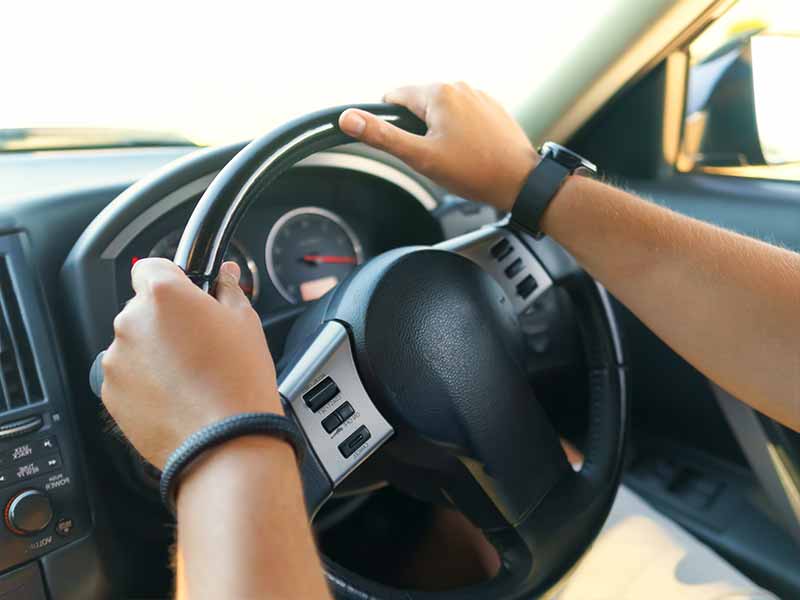
Thrust Angle
Another way that rear wheel alignment can affect your steering is through something called “thrust angle.” This refers to the angle between the front and rear wheels on the same side of your vehicle. If your rear wheels are not aligned with the front wheels, it can cause the thrust angle to be off, which can lead to a crooked steering wheel and difficulty steering in a straight line.
What Is Adjusted In A Rear Alignment?
The rear suspension components on most modern cars and trucks with an independent rear suspension will have similar adjustments to the front suspension.
Solid Rear Axle
The solid rear axle is the simpler of the two suspension systems and has been used in cars and trucks for decades. It consists of a single rigid axle that connects both rear wheels and is typically found in larger, heavier vehicles like pickup trucks and SUVs. While a solid rear axle is durable and reliable, it can be less comfortable on rough roads and corners due to its stiffer, less forgiving ride.
Solid rear axles need little to no adjustment since there isn’t any ability to adjust them usually possible. If you have rear suspension alignment problems, it’s likely due to a damaged chassis or suspension parts due to an accident, severe pothole impact, or curb strike.
Solid rear axles are still commonly found in several types of vehicles, including larger trucks, SUVs, and some performance cars. Here are a few examples:
Pickup Trucks
Many full-size pickup trucks still use solid rear axles for their durability and ability to handle heavy loads. This includes popular models like the Ford F-150, Chevrolet Silverado, and Ram 1500.
SUVs
Like pickup trucks, many larger SUVs use solid rear axles for their towing and off-road capabilities. Examples include the Toyota 4Runner, Jeep Wrangler, and Chevrolet Tahoe.
Muscle Cars
Some high-performance cars, like the Ford Mustang and Chevrolet Camaro, still use solid rear axles to provide better traction and handling during aggressive driving.
While the independent rear suspension is becoming increasingly common in modern vehicles, there are still plenty of options available for those who prefer the simplicity and durability of solid rear axles.
Independent Rear Suspension (IRS)
Independent rear suspension is a more advanced system that allows each rear wheel to move independently of the other. This is achieved by using separate suspension components, such as control arms and ball joints, for each wheel. A simplified version of the suspension design found on the front of your car or truck.
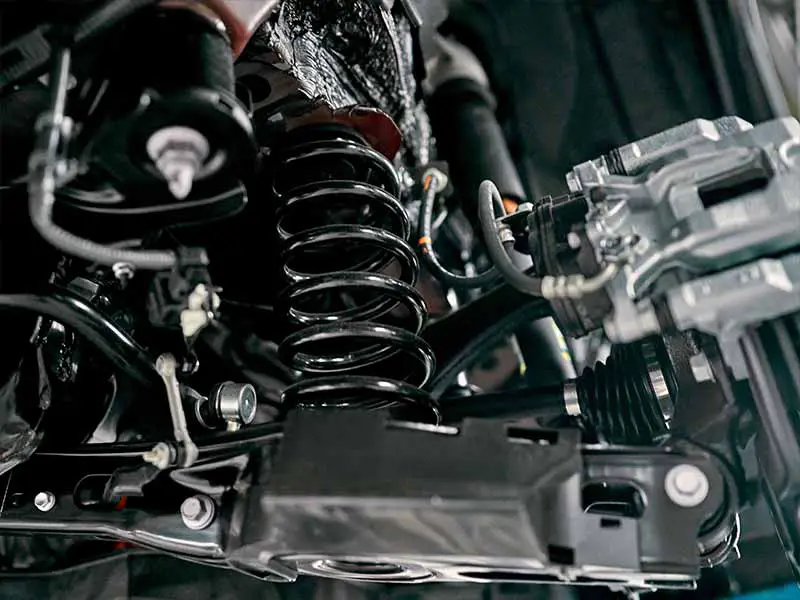
The result is a smoother, more comfortable ride, improved handling, and traction, and better overall performance. IRS is typically found in sportier, higher-end vehicles like sports cars and luxury sedans. But it is also becoming much more commonly found on most modern vehicles at all price levels.
Caster
Caster refers to the angle of the steering axis when viewed from the side of the vehicle. A slight forward tilt of the steering axis, known as a “positive caster,” is typically used in independent rear suspensions. This helps to keep the vehicle traveling in a straight line and provides stability during high-speed driving and on uneven road surfaces.
If the caster angle is out of adjustment, you may experience poor steering control, a tendency to drift or pull to one side while driving, or uneven tire wear. For example, if the caster angle is too far forward, the vehicle may tend to wander or feel unstable during driving. On the other hand, if the caster angle is too far backward, the car or truck may tend to pull to one side or feel heavy and unresponsive during turning.
Camber
Camber refers to the angle of the wheels when viewed from the front or back of the vehicle. In independent rear suspensions, a slight inward angle of the wheels, known as “negative camber,” is typically used. This helps to distribute the vehicle’s weight evenly across the tires and provides better handling and traction during driving.
If the camber angle is out of adjustment, you may experience uneven tire wear, poor handling, or a tendency to pull to one side while driving. For example, if the camber angle is too far inward, the tires may wear more on the inside edges and cause the vehicle to feel “draggy” or less responsive when turning. On the other hand, if the camber angle is too far outward, the tires may wear more on the outside edges and cause the vehicle to feel “loose” or unstable during driving.
Toe
The toe is the angle between the tires when viewed from above. In independent rear suspensions, a slight inward angle of the tires, known as “toe in,” is typically used. This helps compensate for the wheels’ natural tendency to push outward during driving and provides a more stable and responsive ride.
If the toe angle is out of adjustment, you may experience uneven tire wear, poor handling, or a tendency to wander while driving. For example, if the toe angle is too far inward, the tires may wear more on the inside edges and cause the vehicle to feel “draggy” or less responsive when turning. On the other hand, if the toe angle is too far outward, the tires may wear more on the outside edges and cause the vehicle to feel “loose” or unstable during driving.
What Causes Rear Wheel Misalignment?
One of the most common causes of rear wheel misalignment is hitting a curb or pothole. When you hit a hard object with your wheels, it can cause the suspension and steering components to become misaligned, which can lead to uneven tire wear, poor handling, and other issues.
Another common cause of rear wheel misalignment is worn suspension or steering components. Over time, the various components of your suspension and steering system can wear out or become damaged, which can cause your wheels to become misaligned. If you notice that your vehicle is pulling to one side or has uneven tire wear, worn suspension or steering components could be the culprit.
Improper installation of new suspension or steering components can also cause rear wheel misalignment. If you’ve recently had work done on your vehicle and are experiencing handling issues, it’s possible that the new parts were not installed correctly and are causing your wheels to become misaligned.

Is Rear Wheel Alignment Necessary?
First and foremost, proper alignment helps to ensure even tire wear, which can help to extend the life of your tires and save you money in the long run. When your wheels are correctly aligned, they work together in harmony and distribute the weight of your vehicle evenly, which can help to prevent excessive wear and tear on your tires.
In addition to saving you money on tire replacement, proper rear wheel alignment can also help to improve your vehicle’s handling and overall performance. When your wheels are aligned correctly, your vehicle will track straighter and handle better, which can help to prevent accidents and make driving more enjoyable.
If you’re not sure whether your vehicle needs rear wheel alignment, there are a few signs to watch out for. Uneven tire wear, pulling to one side while driving, and a vibrating steering wheel are all signs that your wheels may be out of alignment.
How Often Should You Get A Rear Wheel Alignment?
It’s a good idea to have your rear wheel alignment checked every year or every 12,000 miles, whichever comes first. This can help to catch any alignment issues early on and prevent excessive tire wear and poor handling.
However, if you drive on rough roads, frequently hit potholes or curbs, or regularly carry heavy loads in your vehicle, you may need to have your alignment checked more frequently. Similarly, if you notice any handling issues or uneven tire wear, it’s a good idea to have your alignment checked right away.
It’s also worth noting that if you have any suspension or steering components replaced, you’ll want to have your alignment checked afterward. This can help make sure your wheels are correctly aligned and prevent premature wear and tear on your tires.
Rear Wheel Alignment Cost
On average, you can expect to pay anywhere from $50 to $150 for a rear wheel alignment. However, this can vary depending on where you live, the type of vehicle you have, and the shop you take your vehicle to.
The alignment cost may be higher if your vehicle needs additional repairs or parts, such as new tie rods or ball joints. Similarly, if your car or truck has advanced safety features or requires specialized alignment equipment, the cost may be higher as well.
It’s worth noting that while the cost of a rear wheel alignment may seem like an expense you can skip, it can actually save you money in the long run. By ensuring that your wheels are correctly aligned, you can prevent excessive tire wear and improve your vehicle’s handling, which can help you avoid costly repairs down the line.
Resources
Below are some links you may find helpful when learning about tires
Final Thoughts
While these symptoms may not seem like a big deal at first, neglecting your vehicle’s alignment can lead to bigger problems down the road, including reduced fuel efficiency and costly repairs.
So, if you’re experiencing any of the signs we’ve covered in this article, it’s worth taking your vehicle to a trusted mechanic to get a rear wheel alignment. Not only can this help to extend the life of your tires and improve your vehicle’s handling, but it can also give you peace of mind knowing that you’re driving a safe and reliable vehicle.
Good luck and happy motoring.
